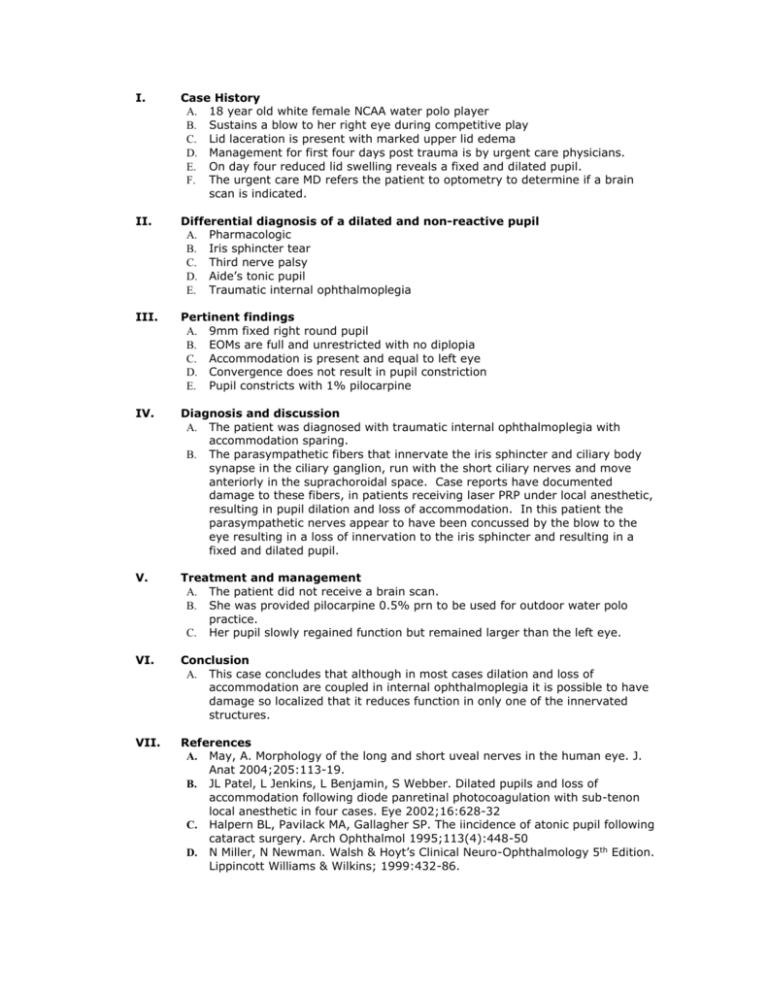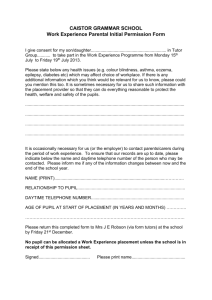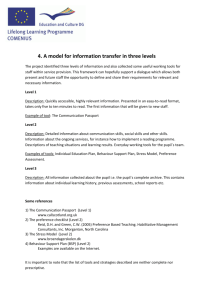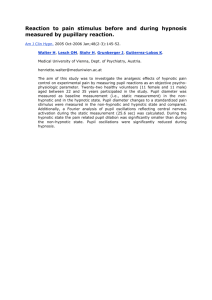outline23963
advertisement

I. Case History A. 18 year old white female NCAA water polo player B. Sustains a blow to her right eye during competitive play C. Lid laceration is present with marked upper lid edema D. Management for first four days post trauma is by urgent care physicians. E. On day four reduced lid swelling reveals a fixed and dilated pupil. F. The urgent care MD refers the patient to optometry to determine if a brain scan is indicated. II. Differential diagnosis of a dilated and non-reactive pupil A. Pharmacologic B. Iris sphincter tear C. Third nerve palsy D. Aide’s tonic pupil E. Traumatic internal ophthalmoplegia III. Pertinent findings A. 9mm fixed right round pupil B. EOMs are full and unrestricted with no diplopia C. Accommodation is present and equal to left eye D. Convergence does not result in pupil constriction E. Pupil constricts with 1% pilocarpine IV. Diagnosis and discussion A. The patient was diagnosed with traumatic internal ophthalmoplegia with accommodation sparing. B. The parasympathetic fibers that innervate the iris sphincter and ciliary body synapse in the ciliary ganglion, run with the short ciliary nerves and move anteriorly in the suprachoroidal space. Case reports have documented damage to these fibers, in patients receiving laser PRP under local anesthetic, resulting in pupil dilation and loss of accommodation. In this patient the parasympathetic nerves appear to have been concussed by the blow to the eye resulting in a loss of innervation to the iris sphincter and resulting in a fixed and dilated pupil. V. Treatment and management A. The patient did not receive a brain scan. B. She was provided pilocarpine 0.5% prn to be used for outdoor water polo practice. C. Her pupil slowly regained function but remained larger than the left eye. VI. Conclusion A. This case concludes that although in most cases dilation and loss of accommodation are coupled in internal ophthalmoplegia it is possible to have damage so localized that it reduces function in only one of the innervated structures. VII. References A. May, A. Morphology of the long and short uveal nerves in the human eye. J. Anat 2004;205:113-19. B. JL Patel, L Jenkins, L Benjamin, S Webber. Dilated pupils and loss of accommodation following diode panretinal photocoagulation with sub-tenon local anesthetic in four cases. Eye 2002;16:628-32 C. Halpern BL, Pavilack MA, Gallagher SP. The iincidence of atonic pupil following cataract surgery. Arch Ophthalmol 1995;113(4):448-50 D. N Miller, N Newman. Walsh & Hoyt’s Clinical Neuro-Ophthalmology 5th Edition. Lippincott Williams & Wilkins; 1999:432-86.







